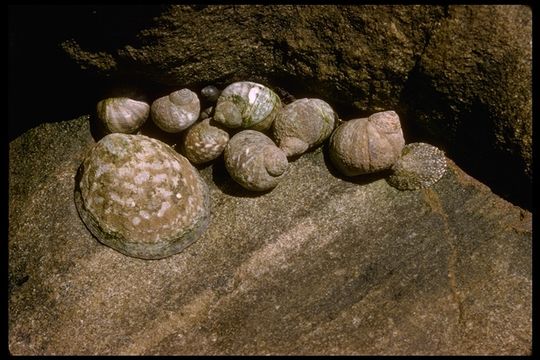Gastropoda
The most diverse and speciose of the molluscan classes, the gastropods appear in the late Cambrian, and by the Ordovician and Silurian had radiated into a number of lineages, although they were not to achieve their present levels of diversity until the late Mesozoic. Instantly recognised by their helical, spiral shell, an object as protective of the soft animal as it is beautiful in form, although some types have a simple cap like shell, and others - the slugs - lost their shell altogether. More distinctive from a phylogenetic point of view (i.e. a synapomorphy or shared defining feature) and the key to their evolutionary success, is the larval developmental process of torsion where the body rotates and the gut becomes U-shaped, thus avoiding fouling (a problem when the anus is positione dover the inlet siphon. But again, there are no rules with gastropods, as in some specilaised groups torsion is reduced or lost.
For the most part highly mobile animals, with a wide flat foot, gastropods are the only molluscs to have conquered dry land. Here their shell serves a s adefense against dessication, an ever present problem facing all terrestrial life. Some terrestrial forms however make do without a shell, instead relying on most environments.
Gastropods have the second-most highly developed nervous system among molluscs, exceeeded only by the cephalopods. Like the cephalopods, they have a head with eyes and tentacles, although in the case of gastropods these have a sensory rather than a raptorial role. Indeed the morphological parallels between gastropods and cephalopods are so close that it was thought until recently that the two groups are closely related and share a common ancestor. Molecular phylogeny however does not support this hypothesis, and it seems instead that the similarities are convergences, parallel evolution, resulting perhaps from a similar active lifestyle. MAK120621
